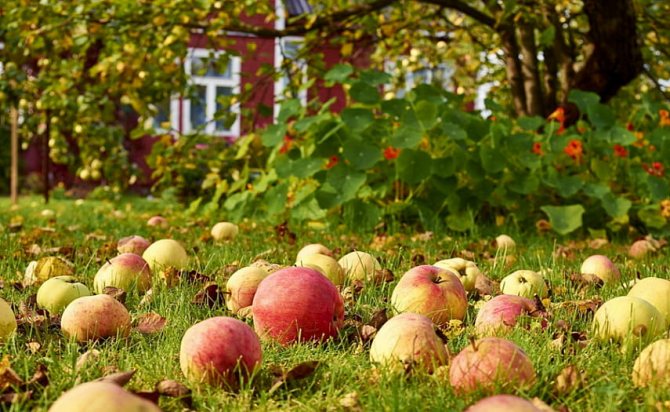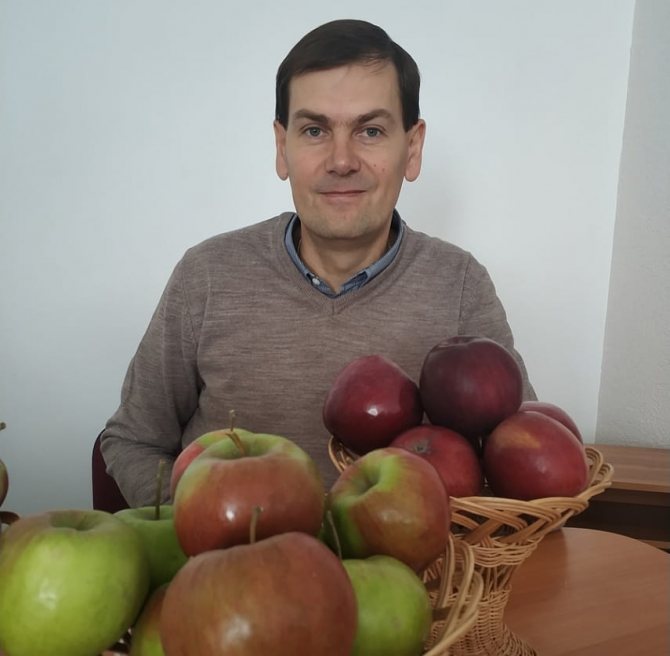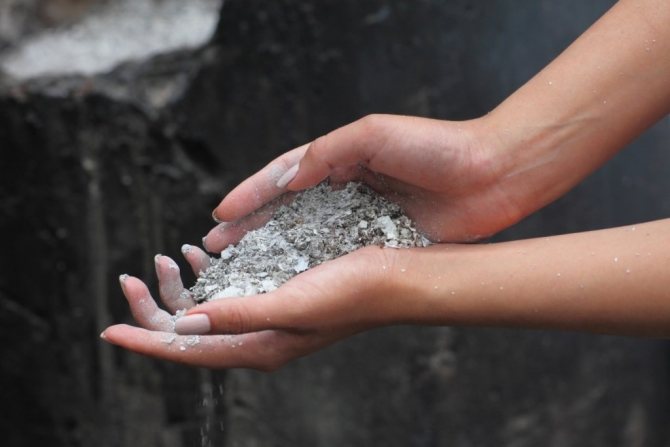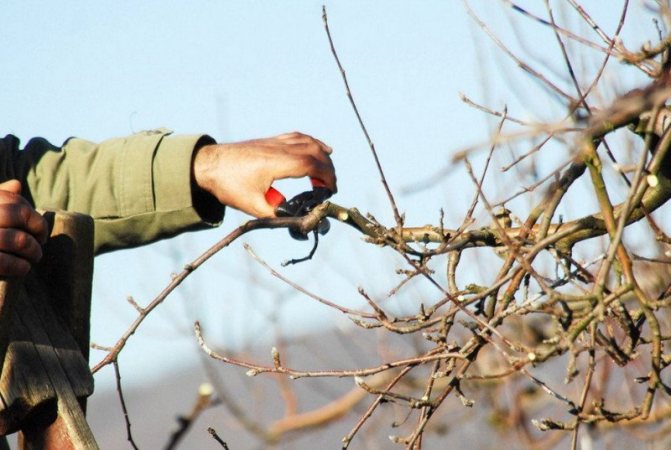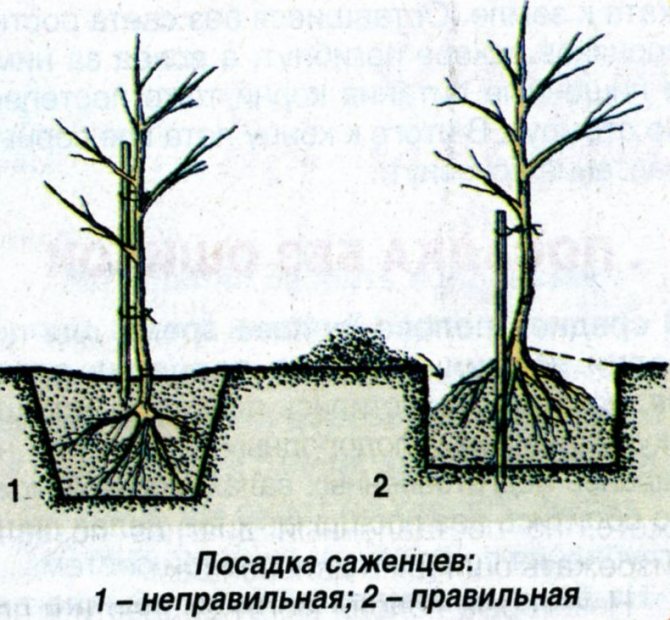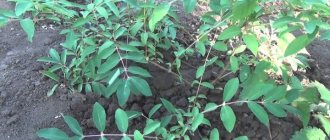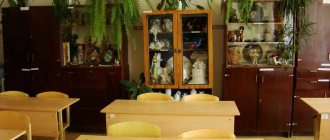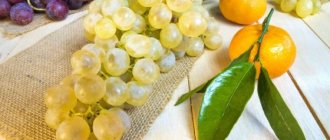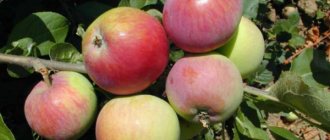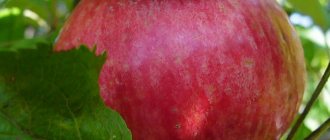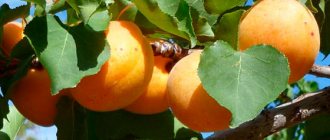The apple tree is perhaps the most popular horticultural crop. Breeders continue to create more and more new varieties, adapting them to the conditions of a particular area. As a result of breeding work, apple trees appear that can tolerate rather low temperatures and are resistant to a variety of types of fungal diseases. The apple variety Belorusskoe Sweet was developed in Belarus in the middle of the 20th century. It is late maturing and is quite suitable for growing in temperate climates. Among the special qualities of this variety is the extraordinary taste of the fruit.
Description
Apple-tree Belarusian sweet - early-growing winter variety.
Bred by breeders of the Institute of Fruit Growing of the Republic of Belarus about 20 years ago. Registration in the State Register took place in Belarus and Russia in 2005 and 2006, respectively.
In Russia it is zoned for the Central region:
- Medium-sized tree, rapidly growing, reaching a maximum height of 3 m by 8-9 years after planting.
- The crown is sparse, rounded or rounded-conical, with somewhat drooping branches.
- The fruits are large, with an average weight of 160-180 g. Rounded, sometimes asymmetrical. The skin is smooth, greenish-yellow, turns yellow upon reaching full maturity.
- The cover color in the form of a blurred blush occupies almost the entire surface of the fruit.
- The pulp is very light, without a pronounced shade. Coarse-grained, semi-oily, medium density, delicate, sweet, with a light aroma.
Removable maturity occurs in September, in warm regions it can last until October.
Consumer maturity - from October to February under favorable ripening conditions, in other cases it is reduced to December - January.
Recommended for cultivation in industrial and private gardens. The purpose of the variety is universal.
Belarusian breeders have bred 40 varieties of apples. What are our apples good for?
Forty domestic varieties of apples and about two dozen varieties of pears and plums are offered to summer residents and gardeners by Belarusian breeders.
You can, of course, plant all kinds of exoticism on the site. But what kind of dacha is without apples, pears and plums? In the Minsk region, gardens have always been not only a decoration, but also a help in the economy. Recently, special attention has been paid to the development of horticulture in the region. This is largely facilitated by the work carried out by scientists from the Institute of Fruit Growing of the National Academy of Sciences of Belarus.
And the history of domestic apple breeding began with the "Belarusian Sinap" variety, bred near Minsk in 1929 by the famous scientists, the Syubarovs.
“The fruits are large, tasty, they have a lot of pectin, they are stored until the next harvest, they are resistant to scab,” says Zoya Kozlovskaya, the head of the department of selection of fruit crops at the Institute of Fruit Growing, characterizes the ancestor of Belarusian apples. - Next, scientists have bred other varieties. As a result, a hybrid fund was created, for the first time there were domestic apples of late ripening, which can be stored for a long time. By the way, our varieties are successfully cultivated not only in Belarus, but also in Russia, the Baltic States, and Ukraine.
- Zoya Arkadyevna, you personally have selected 12 new varieties. What are our apples good for? For example, compared to Polish ...
- We are working to ensure that the apple trees are fruitful and disease resistant, and the fruits are tasty.If we talk about the difference, then Polish needs to be done at least 20-22 treatments per season. Only then can the apples be preserved and protected from scab. Otherwise, no one will buy them. Ours only need preventive treatments. Enough 5-6, including pest control. Unfortunately, agricultural enterprises and amateur gardeners do not always follow the technology. They planted it and think that the tree will grow by itself. And he needs constant care and attention: timely food, water, prevention against diseases.
- What would you advise for the Minsk region to those who decided to start or replenish their garden?
- Absolutely everything that is included in the state register. The list can be found on the website of the Institute of Fruit Growing. Before you go shopping, I advise you to go there and choose what you need. From the summer, in particular, I can recommend "Elena" - a sweet, beautiful, elegant apple with a honey flavor. Ready to use 2 weeks earlier than "papirovka" (white filling). "Kovalenkovskoe" is also sweet, it begins to ripen at the end of August. In September, the "radiant" ripens - with sweet and sour fruits. In October - "Belarusian sweet", stored until the New Year. "Syabryna" will lie until mid-January. Wonderful late varieties - "nadzeyny", "darunak", "pospeh", "vesyalina", "Alesya". The longest, until May, are stored "verbnae", "imant", "Belarusian sinap", "charmer", "memory of Syubarova" and our newest domestic varieties "belana", "duyment", "zorka", "sakavita", " beauty "," navavita ". All of them are resistant to diseases and begin to bear fruit 2-3 years after planting (depending on the rootstock).
- How to store apples properly?
- Only late varieties are long. The fruits must be carefully removed from the tree. What has fallen is not suitable for storage. They took it off and immediately put it in a cool place so that the apples would lie for 5-6 days at a night temperature of + 8 ... +10 degrees. Because they are warmed up, and if you immediately lower them into the cellar, then the fruits will give off heat to the environment. That is, the storage temperature will be higher than allowed. Ideal when there is 3-4 degrees of heat in the cellar. Also, there should be special holes or pipes brought out to the outside for the flow of cold air. With the onset of frost, the apples must be closed.
- In what container are fruits stored better?
- It is possible in wooden boxes. You need to stack it in straw or just in layers. Now there is a convenient plastic container with lattices, designed for 8 kilograms. Ideal for storage: good air circulation, easy to see fruits and remove rotting ones.
- What would you recommend from Belarusian pears?
- The early varieties are successfully cultivated: "dukhmyanaya", "magician", "lagodnaya", "fun". The average ripening period is “just Maria”, “yasachka”. Late - "Belarusian late".
- Are there storage secrets?
- Early pears are good to shoot green. Then they will lie for 2-3 weeks. Varieties of medium ripeness, like apples, must be picked and placed in a cool room. In most cellars, the required temperature - 3-4 degrees - is not. But some amateur gardeners buy special compressors that can lower the temperature and equip basements with them. Then the middle varieties of pears will last two months, and, for example, the "late Belarusian" will last until March.
- Where is the best place to buy seedlings?
- Both firms and individuals trade in planting material. You should always be interested in a passport that permits the production and sale of seedlings. Receiving it, sellers undergo special control at the state seed inspection. Ask also for the variety certificate for the plant.
- What does a healthy seedling look like?
- Without external damage, not dried, without growths on the roots and wrinkles on the shoots. Conscientious sellers have the roots placed in plastic bags, moistened.You can ask to make a cut on them: the suitability is evidenced by a light, not brown color. The trunk can be single (one-year-old) or with branching (two-year-old). The seedling should be leafless by standards.
- When and how to plant?
- They brought the seedlings home and dug them in right away. Or they wrapped the roots with a wet rag and put them in a plastic bag so as not to dry out. But not for long - for two or three days. Can be planted in autumn until October 15–20. If you did not meet the deadline, then it is better to save until spring. To do this, you need to dig a trench, put the tree at an angle of 45 °, sprinkle it with earth, water it abundantly and sprinkle it again. With the onset of frost, cover with spruce legs. In the spring, after the snow melts, plant, water, even if the ground is wet. In late April - early May, make top dressing.
Photo by the author
Advantages and disadvantages
Celebrate such dignity of the apple tree:
- Early maturity;
- Regular fruiting;
- Frost resistance;
- Excellent resistance to scab and very good resistance to bark and wood cancers;
- High taste and commercial and economic qualities;
- The fruits are firmly held on the branches, do not fall off;
- Good storage capacity.
Disadvantages are relative:
- Possible reduction in shelf life;
- Absolutely sweet taste not everyone likes it.
Tree height
For the first 7-9 years after planting a seedling the tree grows up to three meters or slightly higher.
Crown width
The crown is compact, up to 2.5-3 m in diameter.
Yield

Apple-tree fruiting, Belarusian sweet.
The yield is consistently high, without periodicity. It grows quickly, by the age of 5 it reaches 30-35 kg per tree. The potential of industrial gardens is being evaluated 300 centners per hectare and more.
Self-fertility
The variety is self-fertile, varieties - pollinators are not required.
Tasting assessment
Apples are very sweet, with a delicate taste and aroma.
Professional experts disagree on the tasting assessment:
- The first rate the taste at 4.1,
- The second - by 5.0 out of 5.
Gardeners are leaning towards the second opinion, considering the sweet taste of this apple far from insipid, although it does not have sourness.
Sweet fruit lovers Belorussian sweet is considered the best among its kind.
Winter hardiness
Celebrate good winter hardiness of the varietymaking it suitable for growing in regions with fairly severe winters. Apple trees withstand frosts well down to minus 36.
ATTENTION! Gardeners have not yet observed colder winters, nor have they been able to assess the tree's ability to regenerate in the event of frostbite.
Disease resistance
Advantage Belarusian sweet - absolute immunity to scab, resistance to damage to bark and wood.
Tree lifespan
Under favorable conditions, the apple tree bears fruit for 25-30 years, on low-growing rootstocks - 15-20.
The main characteristics of the variety
- The variety is fast-growing.
- The yield of this apple tree is always at a very high level.
- The apple tree bears fruit every year.
- Apples are very tasty and have a sweet, perhaps even sugary taste.
- Fruits are stored for a long time, but for this, proper conditions must be provided.
- Apples can be transported long distances.
- Resistance to scab and some other diseases characteristic of fruit trees is high.
- The apple tree needs constant care, especially pruning.
- Apples of this variety are not one-dimensional, which most gardeners attribute to obvious disadvantages.
Testimonials
Despite its short history, the variety has earned the recognition and sympathy of gardeners. Here are the reviews they share.
Alexander: I grow Belarusian sweet in the Yaroslavl region. I bought it after reading the description, photo. Fruiting since 2014. I am forming it with a tree, it has wintered well for several winters. Doesn't get sick. Apples do not fall, hold well.I shoot at the end of September. Beautiful, sweet. The taste is very interesting, it differs from other sweet varieties..
Catherine: I pick it when the first fruits fall to the ground. I think at this time the best maturity and sugar content. In Minsk, this is the end of September. I keep it in an ordinary basement lie flawlessly before the New Year... Probably, if you shoot earlier, when they are greener, they will be stored longer.
Igor: Belarusian sweet - a world-class apple tree! Some dignity! I got it because I met a photo and a description of the variety, I decided to check it out. It turned out to be very tasty, a special taste and aroma that distinguishes this apple from others.
Does not fall off. Doesn't get boring. It is stored perfectly. You can eat right from the tree... Beautiful. For some reason, we have different sizes, and this is the only drawback.
Dwarf, undersized and columnar stems
In order to save space on the site and plant more different varieties, gardeners increasingly prefer compact apple trees.
On a dwarf rootstock, you can grow:
- Idared;
- Geneva;
- Champion.
Columnar is best done:
- Robin;
- Kovalenkovskoe;
- Radiant.
They differ in stunting:
- Lobo;
- Belarusian sweet;
- Honey Crisp.
Features of planting and care
Knowledge of the peculiarities of planting and caring for the apple tree Belorusskoe sweet is useful for growing a healthy long-term tree and obtaining regular impressive yields.


Saplings of apple-trees of the Belarusian sweet variety.
Landing
Timing
Saplings are planted in early autumn 3-4 weeks before the onset of frost or in early spring, when the ground has already thawed, and the sap flow in the tree has not yet begun and the buds have not swollen.
Technology
A spacious planting pit is prepared in advance, 1-2 weeks in advance. Its size is 1 mx 1 m, its depth is at least 0.7 - 0.8 m.
The middle fraction of gravel or vermiculite is placed on the bottom.
Then rotted manure, complex mineral fertilizer, wood ash are poured in, everything is mixed.
Part of the fertile soil removed from the pit is poured so that the mound is above half the depth.
A stake is installed in the center, to which a seedling is tied after planting. A tree is placed on a mound, the roots are straightened, and covered with clean soil without fertilizers.
IMPORTANT! Care should be taken that the seedling is located on a mound, and the graft site rises 10-15 cm above ground level.
The soil around the tree is compacted. The near-trunk circle is framed with a roller made of earth. Sprinkle with two to three buckets of water.
On semi-dwarf rootstocks, they are planted according to the scheme 5x3 meters, on dwarf ones - 4x2 meters.
Important conditions for landing consider the following:
- You should choose an open, but no drafts, well-lit area with the sun;
- Fertile, loamy, well-drained breathable soil is preferred;
- The grafting site after soil shrinkage should remain high above the ground so that the scion does not take root on its own, bypassing the rootstock (this will lead to a loss of the qualities of the rootstock, for the sake of which the grafting is carried out).
Seedling care in the first year
Apple trees of the first year of life need special attention and a little more intensive care:
- During the growing season, the tree should be watered without stingy every month, in dry times - once every 2-3 weeks.
- First Years need to be protected from cold winds, such measures will not be needed in the future.
- On the eve of the first winters, it is useful to cover the trunk with spruce branches, tying it with the tops down. You can also use reeds, parchment, rags. This will protect the seedling from frost and rodents.
- Mulching near-trunk space promotes soil structuring, moisture retention, air saturation. Forms additional protection from cold weather and supplies with organic nutrients.
Agrotechnics
A set of agrotechnical techniques for an adult apple tree standard:
- Watering 3-4 times per season;
- Two - three times feeding;
- Regular loosening and weeding;
- Mulching;
- Forming and sanitary pruning;
- Disease prevention and immunity maintenance.
For high-yielding varieties, which include Belorusskoe sweet, timely fertilizing with mineral and organic fertilizers is important to maintain the viability of the tree and regular fruiting:
- In the spring - nitrogen and liquid organic;
- After flowering - a mineral complex including nitrogen, potash, calcium components;
- In autumn - phosphorus and potassium, they will help prepare the apple tree for winter, strengthen immunity and frost resistance.
Pruning and shaping the crown
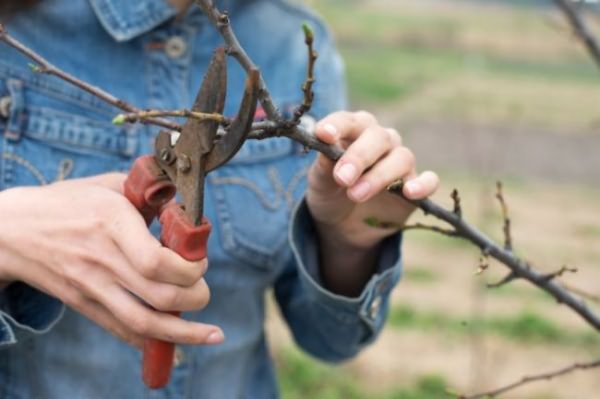

The formation of the crown of an apple tree in the form of pruning is required for fruit plantations almost throughout the life of the plant.
In early spring before the kidneys wake up, carry out sanitary and formative pruning:
- Remove weakened, damaged, dried and frostbitten branches.
- Cut off excess shoots that thicken the crown.
- Get rid of branches that grow vertically along the trunk or inside the crown.
Taking into account the high growth rates of the Belarusian sweet, cut off annual growth by about one third.
One-year-old apple trees
ATTENTION! A nursery-acquired seedling usually has several well-spaced main lateral (skeletal) branches. In this case, you do not need to trim when planting.
After the first wintering you should start forming the crown of a young apple tree. During this time, abundant growth appears, which should be removed:
- The center conductor is shortened by 20%, leaving about 40 cm above the upper skeletal branch.
- Side branches shorten by one third of the growth, while the upper ones should be shorter than the lower ones.
- To check the correct pruning, the branches are simultaneously attracted to the trunk: the tops should be at the same height, while the vertical shoots remain 20-25 cm higher.
Pollinator varieties
The variety is self-fertile, no special pollinators are required.
How to plant an apple tree
Pits for seedlings are prepared two weeks before planting, during which time the soil settles well. Dig them with a diameter of 1.2 m, a depth of 50-60 cm, separating a more fertile top layer, in the future it will be used for planting.


The dug hole is additionally processed. To do this, loosen the bottom with a metal rod or a shovel to the depth of a bayonet. Old cans, walnut shells or rusty iron are placed there, and then sprinkled 20 cm with the previously removed top soil. Fertilizers and some wood ash are also added to the prepared pit. All this is very useful for the Belarusian Sweet tree. The apple variety is susceptible to feeding, so the result will not be long in coming. Fertilizers are mixed with the soil by adding the topsoil soil. Taken together, the pit should be half full. Fertile soil is also added to the rest of the pit until a mound 20 cm high rises.This rule cannot be neglected, otherwise the seedling will sag. In the center of the formed hill, a stake is driven in - the future support for the seedling. After that, a seedling is installed, its roots are straightened and covered with fertile soil, carefully tamping it.
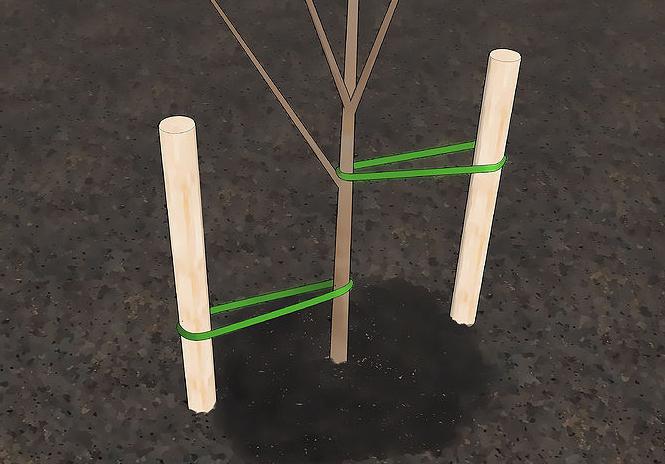

Since the apple tree "Belarusian Sweet" requires special nuances when planting, it is better to involve households, neighbors or an acquaintance gardener to help. It is imperative to tie the seedling to the hammered stake in order to provide it with reliable support.
Features of ripening and fruiting
The beginning of fruiting
Fast-growing variety... The first apples appear in 2-3 years, often on a clonal rootstock in the first year after planting.
Flowering period
Flowering in May, exact dates and duration depend on the region of growth and weather conditions of the area.
Timing
Fruit ripening
Standard ripening times September - early October... But the dates also depend on the climate: in the more northern regions, removable maturity occurs at the end of August.
You can eat apples right after picking, although experts indicate the period of consumer maturity: January - February.
Fruit storage
In a dark, cool room, fruits are stored from October to February. The term may be shortened to December, which depends on the growing conditions and timely collection of fruits.
What you should pay attention to
Essentially, all trees need grooming. Observing the rules of cultivation and all the nuances of caring for it, gardeners will receive full fruits. It is very important to choose the right apple varieties. From the photos accompanying this article, you can see the step-by-step process of growing a young tree.


You should also focus on the thinning of fruits and ovaries. This must be done, otherwise the fruit will grow underdeveloped and with low palatability. At the moment of ovary formation, the central fetus is removed from each bundle. The abundance of fruit on a tree can result in a periodic fruiting period when it rests after a high harvest.
Growing in regions
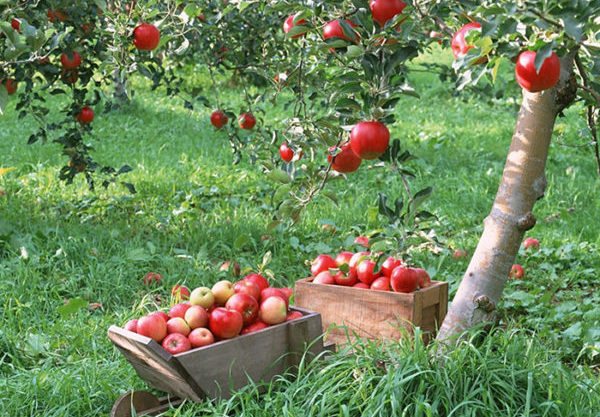

Very productive winter variety Belorusskoe sweet.
In outskirts of Moscow the most favorable conditions for the apple-tree Belarusian sweet, because the climate is similar to the Belarusian one. The variety is zoned for this region.
In the Urals in the absence of extreme cold weather and with proper care, enthusiastic gardeners get good results in growing this winter-hardy variety. The fruits are removed in early September. They continue to observe the variety in harsh conditions.
In Ukraine the climate is milder and closer in characteristics to the Belarusian weather, the apple tree feels quite comfortable here.
Apple trees for the Moscow region: varieties
Photos of the Belarusian Sweet tree, presented in this article, clearly show how to properly plant and care for this type of plant. It should be noted that this variety is ideal for the climate of the Moscow region. Popular among summer residents and "White filling", Antonovka "," Orlik "and others. In addition, they are zoned for central regions. Therefore, gardeners choose the varieties of apple trees near Moscow. The photo shows that they have good fruiting, which means they are adapted to our climatic conditions.
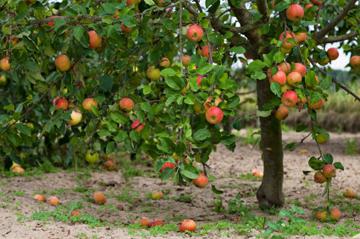

There are many varieties of fruit trees. However, summer residents of the Moscow Region prefer “Belorusskoe Sweet”. The apple variety is excellent for this region, since it has high frost resistance and is not prone to all sorts of diseases. In addition, such trees tolerate the harsh winter well and are capable of producing a good harvest.
Features of Belarusian breeding
In Belarus, back in Soviet times, a large selection work was carried out, which does not stop to this day, Belarusian varieties are known to gardeners from different countries. Of the new ones, I would like to name such early or summer varieties: Kovalenkovskoe, Orlovim, Dream. They ripen in July and can only be stored for one month. Well known to professionals are such autumn varieties, zoned for the Vitebsk region: Luchezarnoe, Orlik, Auxis.
Autumn apples are good because they ripen at the beginning of autumn, they can be eaten for up to three months without losing the quality of the fruit. But winter varieties are considered the real elite of apple culture, they give a harvest in early autumn, store it for about five months. The latest technical ripeness comes in October, and they are recommended to eat after a couple of months, when the sweetness and aroma intensify, they can be stored until the next harvest.
Among them, columnar apple trees occupy an important place, and from the local ones, Alesya, Freedom, Pamyat Kovalenko, Verbnoe, Pospekh, Zaslavskoe, Antey, Belorusskoe Raspberry received excellent reviews. The varieties of their apple trees are well known in Belarus, for many of them the Golden Delicious apple tree served as a selection material.Before deciding which apple trees to plant in your garden, you should look at the reviews, read the description and the main characteristics of the varieties, including columnar apple trees.

